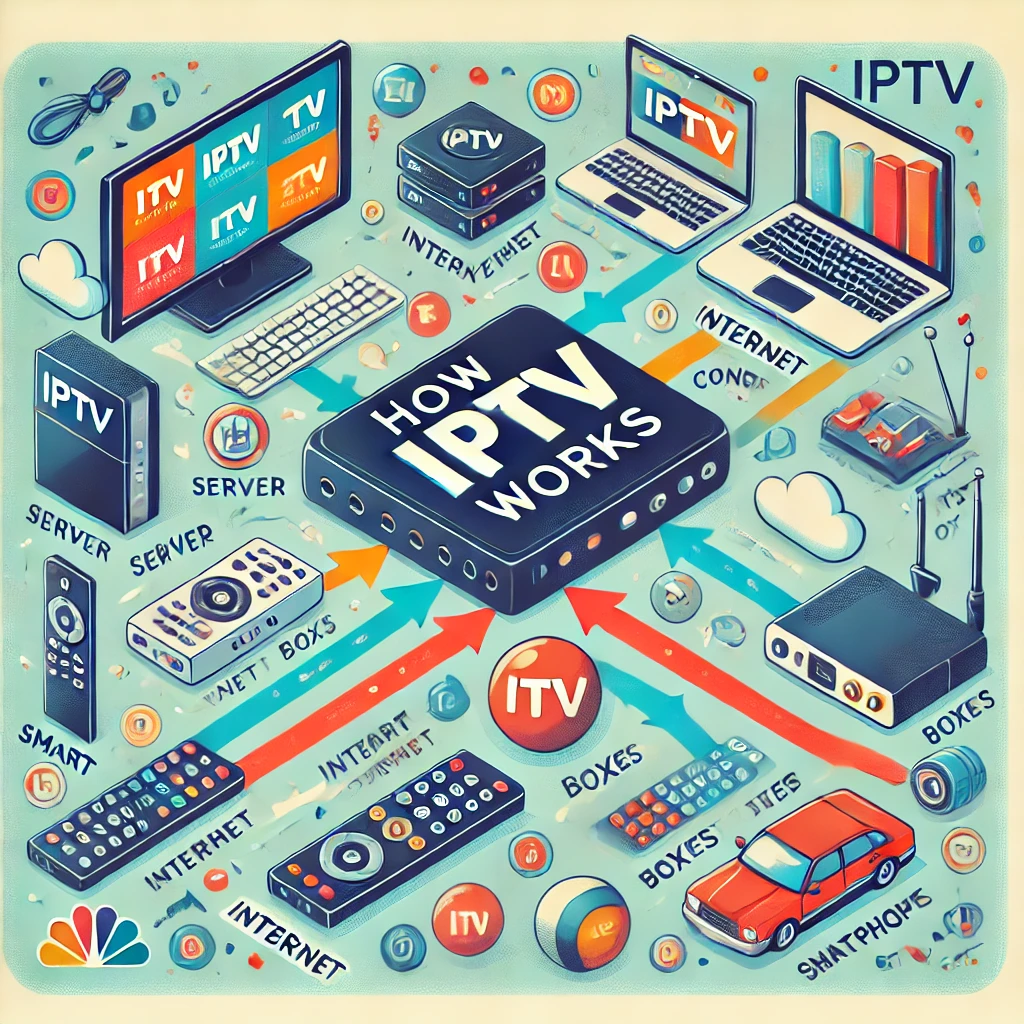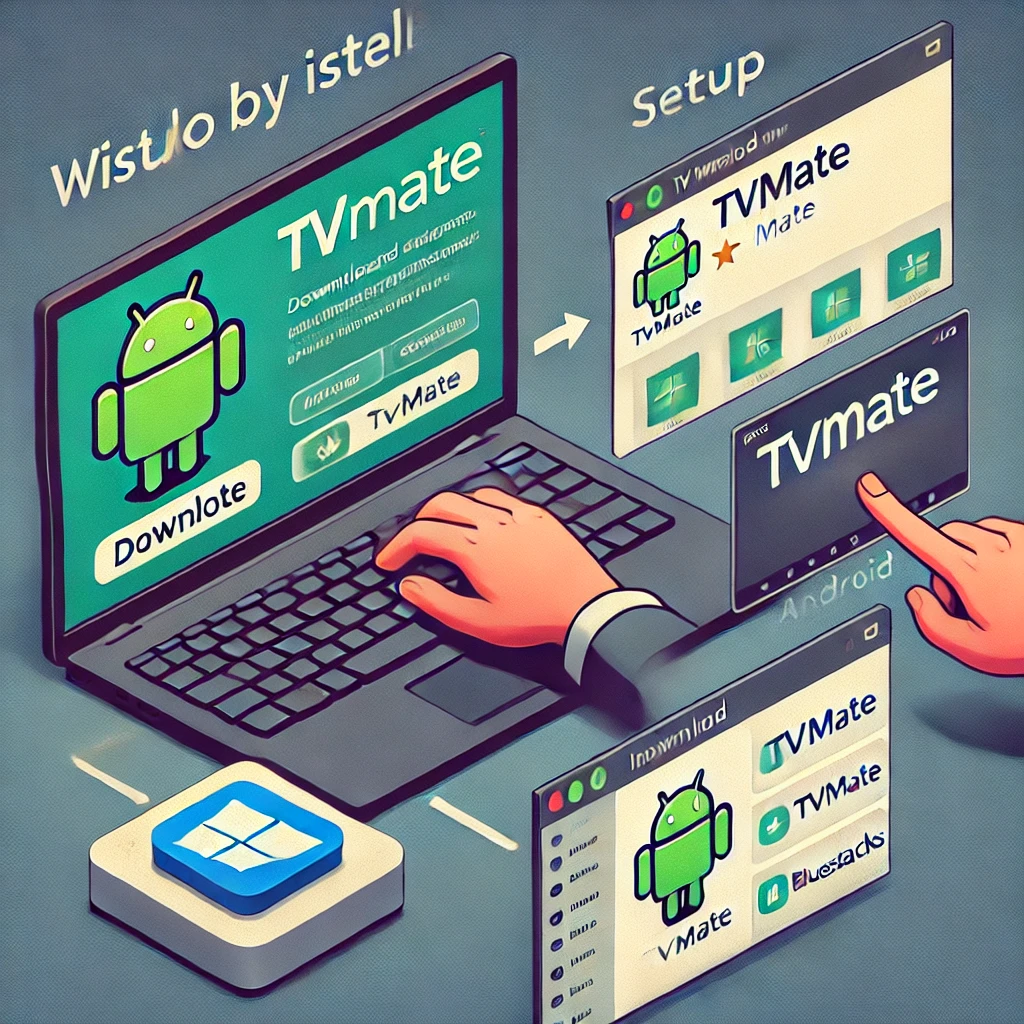How IPTV Works: A Comprehensive Guide
What is IPTV?
How IPTV works , or how Internet Protocol Television works, first of all, it is a digital television broadcasting protocol that delivers television content over the internet. Unlike traditional TV services, which use satellite or cable, IPTV uses internet protocols to stream video on demand, live TV, and other media content. This technology allows users to watch TV programs on various devices, including smartphones, tablets, smart TVs, and computers.
The Technology Behind IPTV
IPTV leverages the power of internet protocols to transmit television content. The primary components of this technology include the IPTV protocols and video compression formats that ensure smooth and efficient streaming.
IPTV Protocols and Formats
IPTV Protocols:
- RTSP (Real-Time Streaming Protocol): Used for establishing and controlling media sessions between end points.
- RTP (Real-Time Transport Protocol): Manages the delivery of audio and video over IP networks.
- HTTP (Hypertext Transfer Protocol): Often used for Video on Demand (VOD) services, allowing users to stream content directly from a web server.
Video Compression Formats:
- MPEG-4: A standard for video compression that reduces the file size of video content without sacrificing quality.
- H.264: Another widely used video compression standard that provides high-quality video at lower bit rates.
Types of IPTV Services
IPTV services can be broadly categorized into three types: Live IPTV, Video on Demand (VOD), and Time-Shifted IPTV. Each type offers unique features and benefits to cater to different viewing preferences.
Live IPTV
Live IPTV broadcasts live television channels over the internet, allowing users to watch real-time events as they happen. This service is similar to traditional TV but with the added convenience of internet streaming.
Benefits of Live IPTV:
- Access to a wide range of live channels
- Ability to watch live sports, news, and events
- Often includes a DVR feature to record live shows
Video on Demand (VOD)
Video on Demand (VOD) allows users to select and watch video content whenever they want. VOD services provide a library of movies, TV shows, and other media that users can stream instantly.
Popular VOD Services:
- Netflix
- Amazon Prime Video
- Hulu
Time-Shifted IPTV
Time-shifted IPTV lets users watch TV programs at a later time than the original broadcast. This service includes features like catch-up TV and start-over TV, which allow viewers to watch missed episodes and restart live programs from the beginning.
Advantages of Time-Shifted IPTV:
- Flexibility to watch programs at any convenient time
- No need to worry about missing live broadcasts
- Enhanced viewing experience with pause, rewind, and fast-forward options
How IPTV is Delivered
IPTV delivery methods play a crucial role in ensuring a seamless viewing experience. The primary delivery methods are Unicast, Multicast, and Broadcast.
IPTV Delivery Methods
- Unicast: In Unicast, each user receives a unique stream from the server, allowing for personalized content delivery. This method is bandwidth-intensive as each stream requires a separate connection.
- Multicast: Multicast delivery sends a single stream to multiple users simultaneously, making it more efficient than Unicast. It reduces the load on the server and minimizes bandwidth usage.
- Broadcast: Broadcast IPTV transmits content to all users at the same time, similar to traditional TV broadcasting. It is commonly used for live TV channels.
IPTV Infrastructure
A robust IPTV infrastructure is essential for delivering high-quality content to users. The key components of this infrastructure include servers, data centers, and Content Delivery Networks (CDNs).
Servers and Data Centers
Servers and data centers store and manage the IPTV content. They are responsible for encoding, storing, and transmitting video streams to users. High-performance servers ensure smooth and uninterrupted streaming.
Content Delivery Networks (CDNs)
Content Delivery Networks (CDNs) are distributed networks of servers that deliver content to users based on their geographic location. CDNs enhance the delivery speed and reliability of IPTV services by reducing latency and minimizing buffering.
Benefits of CDNs:
- Faster content delivery
- Improved streaming quality
- Reduced buffering and latency
Setting Up IPTV
Setting up IPTV involves both hardware and software components. Users need compatible devices and applications to enjoy IPTV services.
IPTV Hardware Requirements
To set up IPTV, users need specific hardware components. These include set-top boxes, smart TVs, and other compatible devices.
Essential IPTV Hardware:
- Set-Top Boxes: Devices like Roku, Apple TV, and Amazon Fire Stick that connect to the TV and stream IPTV content.
- Smart TVs: Televisions with built-in internet connectivity and pre-installed IPTV apps.
- Streaming Devices: Devices like Chromecast and Nvidia Shield that enable IPTV streaming on regular TVs.
IPTV Software and Apps
IPTV software and apps are crucial for accessing and managing IPTV UK content. Many IPTV service providers offer proprietary apps, while third-party apps are also available.
Popular IPTV Apps:
- Kodi: An open-source media player that supports IPTV plugins.
- VLC Media Player: A versatile media player that can stream IPTV channels.
- IPTV Smarters: A dedicated IPTV app with a user-friendly interface.
Benefits of IPTV
IPTV offers numerous advantages over traditional TV services, making it an attractive option for modern viewers.
Flexibility and Convenience
IPTV provides unparalleled flexibility and convenience. Users can watch their favorite shows and movies anytime, anywhere, on various devices. The ability to pause, rewind, and fast-forward enhances the viewing experience.
High-Quality Streaming
IPTV delivers high-quality video and audio streams, thanks to advanced compression techniques and efficient delivery methods. Factors like internet speed and video compression significantly impact streaming quality.
Factors Influencing Streaming Quality:
- Internet Speed: Higher speeds ensure smoother streaming and less buffering.
- Compression Techniques: Efficient compression reduces file size while maintaining quality.
Common Issues with IPTV and How to Solve Them
Despite its advantages, IPTV can sometimes encounter issues. Understanding these problems and their solutions can enhance the user experience.
Buffering and Streaming Interruptions
Buffering is a common issue in IPTV streaming. It occurs when the internet speed is insufficient to maintain a continuous stream.
Tips to Reduce Buffering:
- Ensure a stable and high-speed internet connection
- Use wired connections instead of Wi-Fi
- Close unnecessary background applications
IPTV Compatibility Issues
Compatibility issues can arise when using IPTV services on different devices. Ensuring that the device supports the IPTV app or service is crucial.
Solutions for Compatibility Issues:
- Use compatible devices and apps
- Update the device’s firmware and software
- Consult the IPTV provider for specific device compatibility
Future of IPTV Technology
The future of IPTV technology looks promising with continuous advancements and innovations. Emerging technologies are expected to further enhance the IPTV experience.
Predictions for Future Developments
- AI and Machine Learning: Improved content recommendations and personalized viewing experiences.
- 5G Technology: Faster and more reliable streaming with minimal latency.
- Virtual Reality (VR): Immersive IPTV experiences with VR technology.
Frequently Asked Questions about How IPTV Work
- What is IPTV and how IPTV work?
- IPTV delivers television content over the internet using internet protocols.
- What equipment do I need for IPTV?
- Set-top boxes, smart TVs, and compatible devices.
- Can I use IPTV on multiple devices?
- Yes, many IPTV services support multiple devices.
- How can I improve my IPTV streaming quality?
- Ensure a stable internet connection and use efficient streaming devices.
- Is IPTV legal?
- Legal IPTV services comply with copyright laws and regulations.
Conclusion
Understanding how IPTV works is crucial for making informed decisions about using this technology. With its flexibility, high-quality streaming, and continuous advancements, IPTV is set to revolutionize the way we consume television content. Whether you’re considering switching to IPTV or looking to enhance your current setup, this comprehensive guide provides all the information you need to get started.
IPTV, or Internet Protocol Television, is revolutionizing the way we consume media by delivering television content over the internet. Understanding how IPTV works is crucial for anyone looking to take advantage of this modern technology. Essentially, IPTV uk works by streaming content through your internet connection rather than traditional satellite or cable methods. This means that how IPTV works involves using internet protocols to transmit video and audio data directly to your device. By comprehending how IPTV works, you can better appreciate its flexibility and the wide range of content it offers, from live TV to on-demand videos. Whether you are a tech enthusiast or simply looking for a better TV experience, knowing how IPTV works can greatly enhance your viewing options and convenience.



